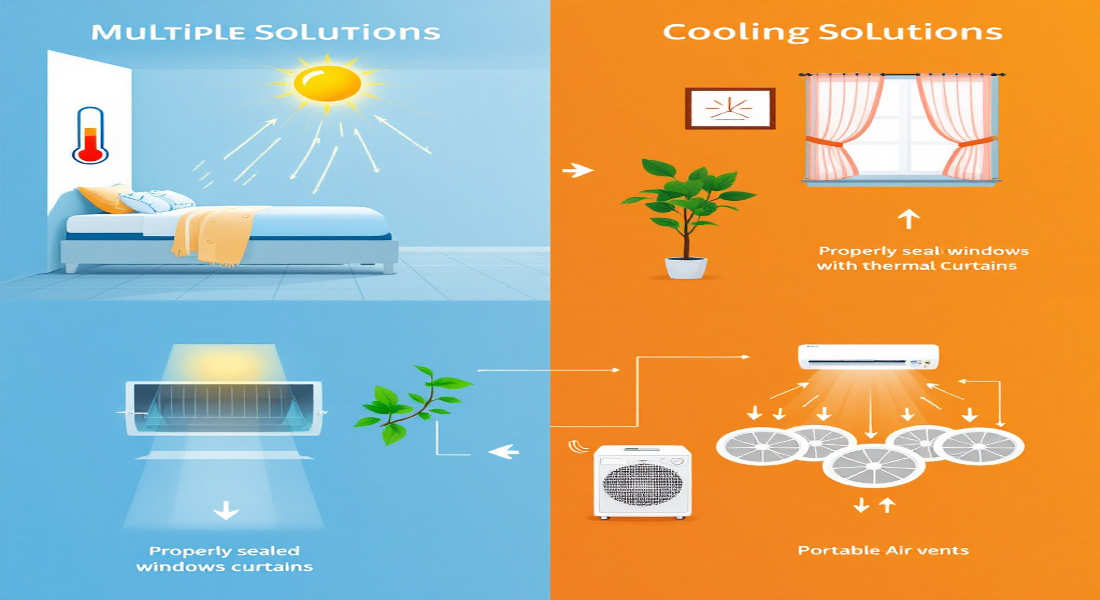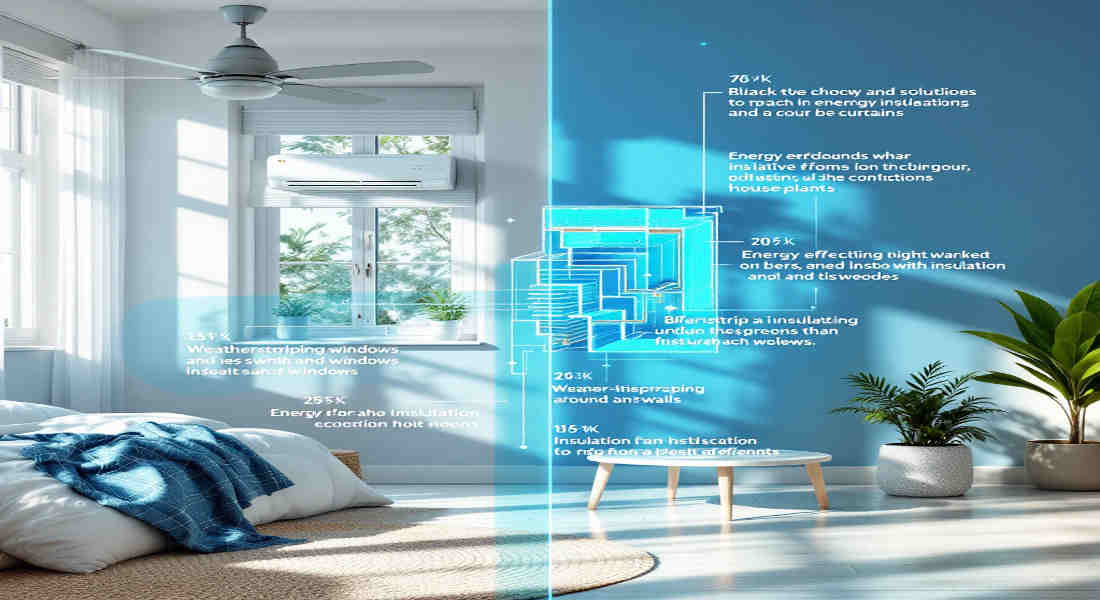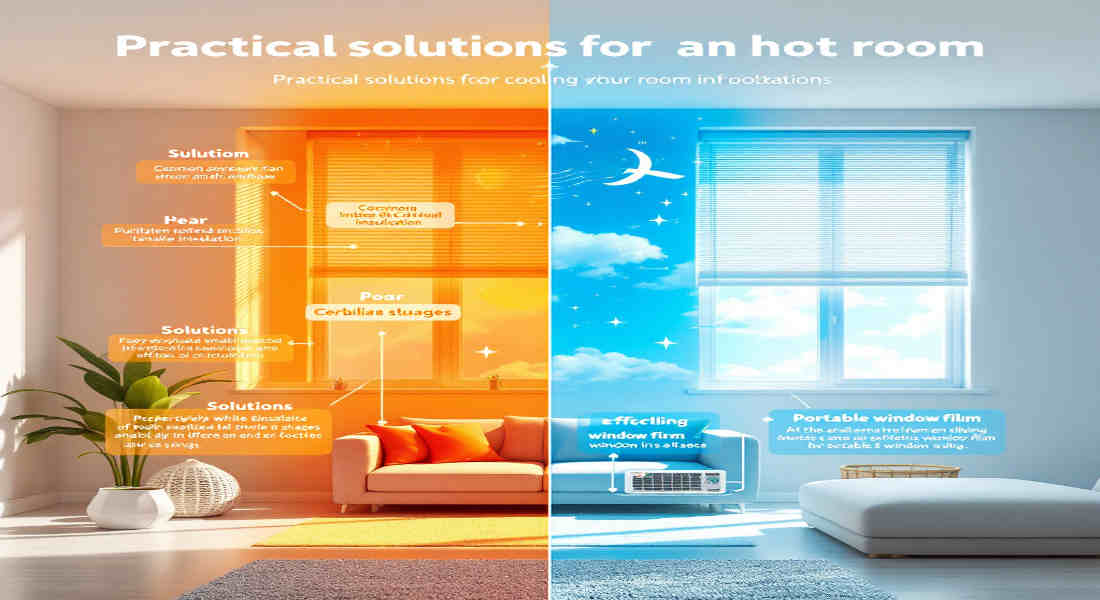Have you ever walked into a room in your house and instantly felt the oppressive heat compared to the rest of the home? This is a common issue faced by many homeowners, and it can often feel like there’s no easy solution. Whether it’s the upstairs bedroom, an attic-turned-living space, or a west-facing room that catches all the afternoon sun, these hot spots can dramatically reduce your comfort at home.
Why does this issue matter? A hot room not only affects your comfort but can also increase your energy bills as your air conditioning system works overtime to cool down the space. Over time, this imbalance can lead to wear and tear on your HVAC (heating, ventilation, and air conditioning) system, reducing its efficiency and lifespan. Furthermore, consistently high temperatures in certain areas can create an unhealthy environment, especially for those sensitive to heat.
Understanding Why a Room Gets Hot
Before diving into solutions, it’s essential to understand why certain rooms in your house are hotter than others. Knowing the root cause of the issue can help you target the problem effectively and prevent it from recurring.
Common Causes of a Hot Room
Sunlight Exposure and Windows
Rooms with many windows or west-facing windows are often exposed to more direct sunlight, especially during the afternoon. This leads to a significant amount of heat gain, making these rooms warmer than others in the house. If the windows are single-pane or lack proper shading, the heat transfer becomes even more pronounced.
Location in the House
Rooms located on the top floor or attic spaces are naturally hotter because heat rises. This is a basic principle of thermodynamics, and without proper insulation or ventilation, these areas can trap heat, creating a stifling environment.
Poor Ventilation
Rooms with poor airflow or closed doors can feel hotter because they don’t receive enough cool air from the HVAC system. Obstructed vents or imbalanced ductwork can exacerbate this issue.
HVAC System Imbalances
Sometimes, the issue lies within your HVAC system. Poorly designed ductwork or an unbalanced HVAC system can result in uneven cooling, leaving one room significantly warmer than others.
How Sunlight, Airflow, and HVAC Design Impact Temperature
- Sunlight: Inadequate shading or insulation allows rooms to absorb heat throughout the day, raising the overall temperature.
- Airflow: Proper ventilation is critical for maintaining consistent temperatures. Without it, hot air can become trapped.
- HVAC Design: An improperly designed HVAC system can struggle to distribute air evenly across all rooms, leaving some spaces too hot or too cold.
Identifying the specific cause of your hot room is the first step toward resolving the issue. Now, let’s explore solutions you can implement today.
Simple DIY Fixes to Cool Down a Hot Room
If you’re looking for quick and affordable ways to fix a hot room, there are several DIY solutions you can try. These methods don’t require major renovations or professional help and can provide noticeable improvements.
You may also read (is yelling in your house considered illegal).
Check and Adjust Window Treatments
- Install Blackout or Insulated Shades
- Blackout curtains or insulated shades are designed to block sunlight and reduce heat transfer. They’re particularly effective for west-facing rooms or windows that receive direct sunlight.
- Use Solar Screening Shades
- Solar screens or reflective films can block heat without obstructing your view. These shades are ideal for maintaining natural light while keeping your room cooler.
- Opt for Darker-Colored Shades
- Darker shades absorb light, which can help prevent heat from entering your living space.
Improve Airflow and Ventilation
- Keep Doors Open
- Keeping doors open allows for better air circulation, preventing hot air from becoming trapped in one space.
- Ensure Vents Are Unobstructed
- Check that your air vents are open and free from blockages like furniture or curtains. Blocked vents can reduce airflow and cooling efficiency.
- Use Vent Deflectors
- Vent deflectors can help redirect cool air to the hot room by adjusting airflow patterns. Alternatively, you can partially close vents in cooler rooms to force more air into the warmer one.
Use Fans and Portable Cooling Devices
- Ceiling Fans
- Ceiling fans can circulate air effectively, creating a wind-chill effect that makes the room feel cooler.
- Portable Air Conditioners
- If your central AC isn’t enough, a portable air conditioner can provide targeted cooling for a specific room.
- Evaporative Coolers
- In dry climates, evaporative coolers are an energy-efficient way to lower temperatures by adding moisture to the air.
Seal Windows and Doors
- Check for Leaks
- Inspect windows and doors for gaps or cracks that allow hot air to enter. Use weatherstripping or caulk to seal these areas.
- Add Door Sweeps
- Door sweeps can help block hot air from entering through doors, improving temperature control.
Additional Tips for Immediate Relief
- Replace HVAC Filters Regularly
- Dirty filters can restrict airflow, reducing the efficiency of your cooling system. Replace them every 1-3 months.
- Control Humidity
- High humidity levels can make a room feel hotter than it is. Use a dehumidifier to maintain a comfortable moisture level.
HVAC and Professional Solutions
In some cases, DIY fixes may not be enough to resolve the problem. Professional HVAC solutions can address more complex issues that contribute to an overheated room.
Inspect and Balance Air Ducts
- Identify Damaged Ducts
- Leaky or poorly insulated ductwork can reduce airflow to specific rooms. Repairing or sealing these ducts can improve overall cooling.
- Rebalance the HVAC System
- An HVAC technician can adjust your system to ensure even air distribution across all rooms.
You may also read (can i legally remove a street sign from my house).
Upgrade or Repair Your HVAC System
- Replace Inefficient Systems
- If your AC unit is old or struggling to cool your home, it may be time for an upgrade. Modern systems are more energy-efficient and better at maintaining consistent temperatures.
- Install Zoning Systems
- HVAC zoning allows you to control the temperature in individual rooms, making it ideal for homes with hot spots.
Install a Ductless HVAC System
- What Are Ductless Mini-Splits?
- These systems provide targeted cooling without the need for ductwork. They’re perfect for rooms like finished attics or sunrooms.
- Benefits
- Ductless systems are energy-efficient, quiet, and easy to install.
Use Smart Thermostats and Fans
- Set to Circulate
- Smart thermostats can be programmed to keep the fan running, improving air distribution.
- Adjust Settings Remotely
- Many smart thermostats allow you to monitor and control temperatures from your phone.
When to Call a Professional
If you’ve tried all the above solutions without success, it’s time to seek professional help. An expert can diagnose underlying issues and recommend the best course of action.
Structural and Long-Term Fixes
For a permanent solution, consider making structural improvements to your home. These fixes may require more investment but offer lasting results.
Window Upgrades
- Double or Triple-Pane Windows
- These windows provide better insulation, reducing heat transfer and improving energy efficiency.
- Exterior Shading Devices
- Install awnings, shutters, or window films to block sunlight before it enters your home.
Insulation Improvements
- Add Attic Insulation
- Proper insulation prevents heat from entering your home through the roof.
- Upgrade Wall Insulation
- Insulated walls can help maintain a consistent indoor temperature.
Roof and Exterior Solutions
- Reflective Roof Coatings
- These coatings reflect sunlight, minimising heat absorption.
- Cool Roofs
- Cool roof materials reduce thermal conductivity, keeping your home cooler.
Landscaping for Shade
- Plant Trees or Shrubs
- Strategic landscaping can provide natural shade, blocking sunlight from hitting your home directly.
Energy Efficiency and Cost Considerations
Addressing a hot room can lead to significant energy savings over time. Here’s a breakdown of costs and benefits:
You may also read (should i buy a house with vermiculite insulation).

